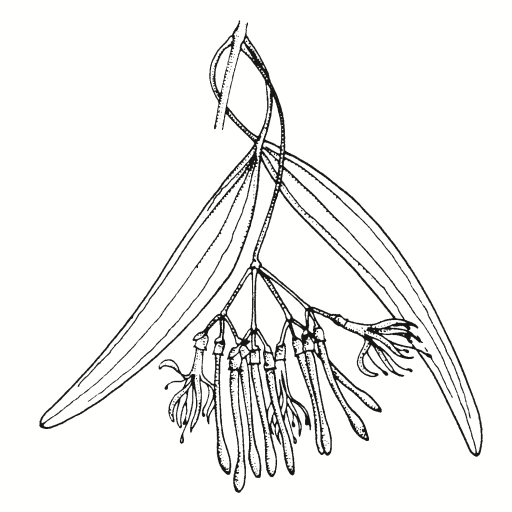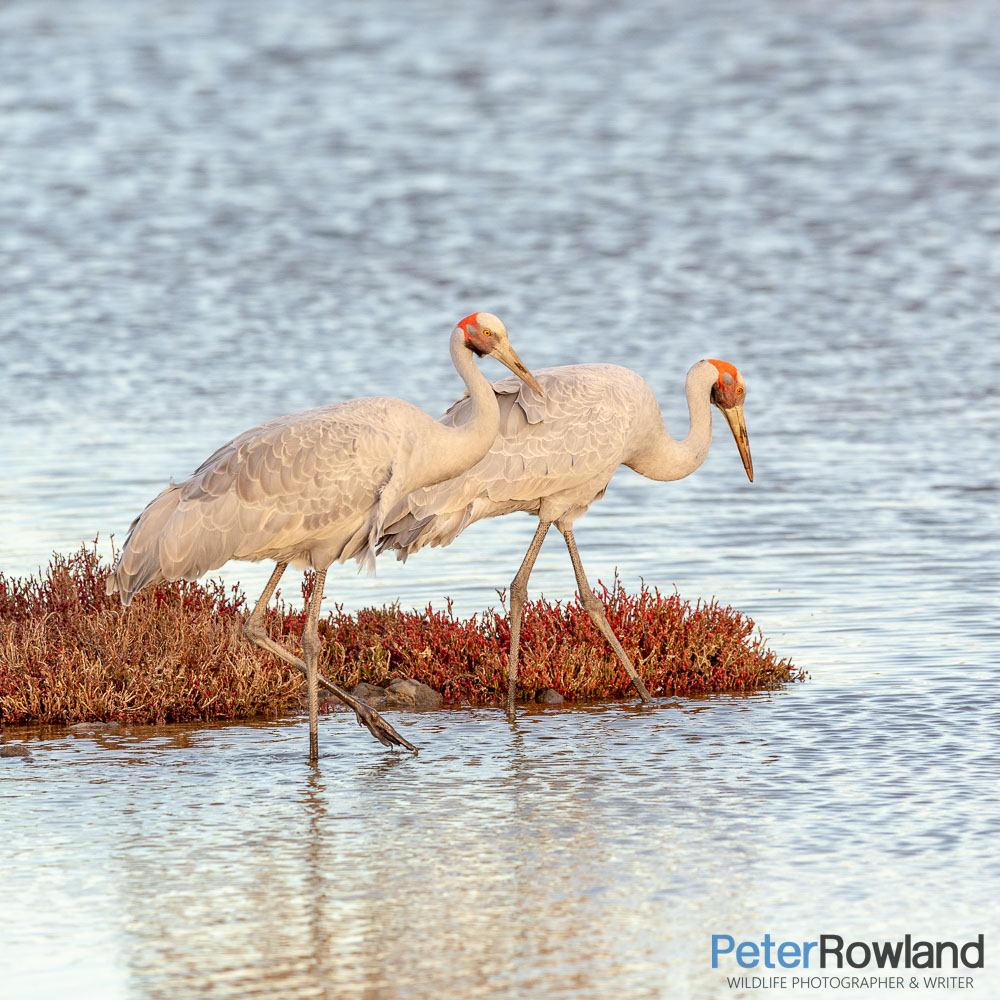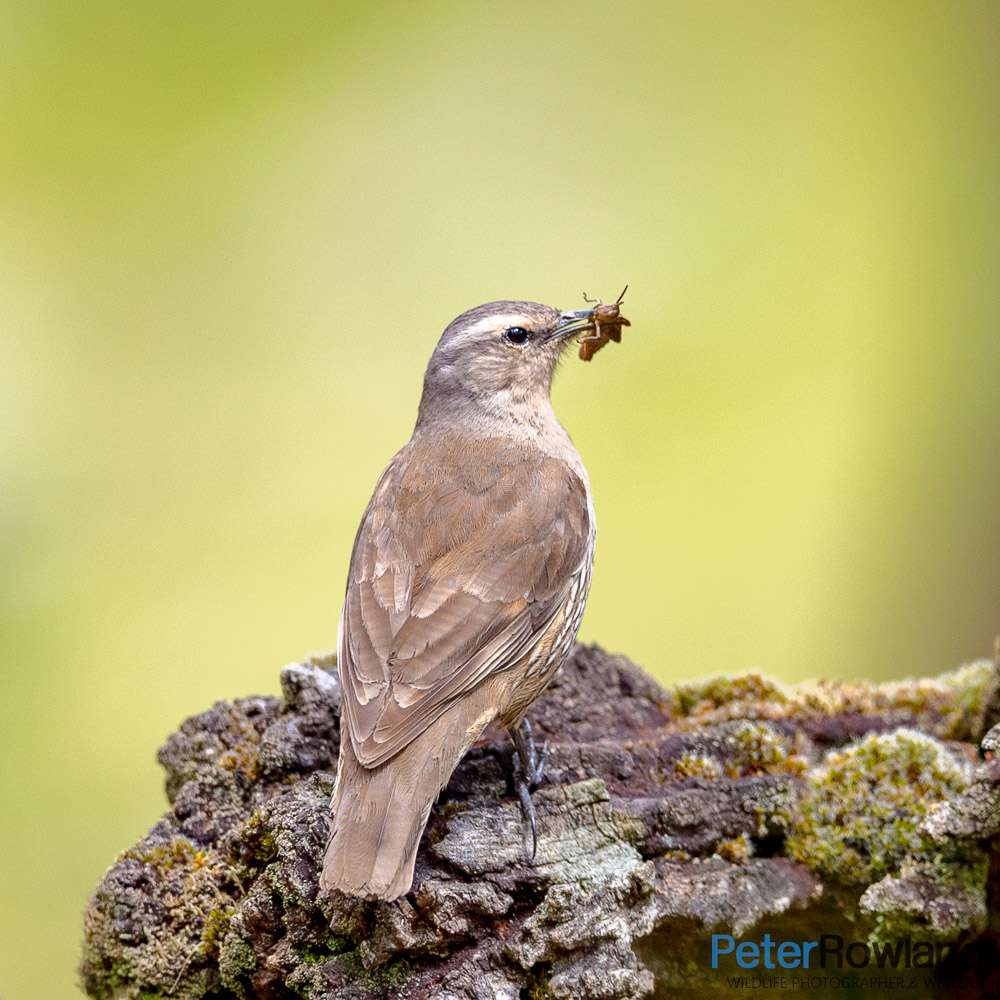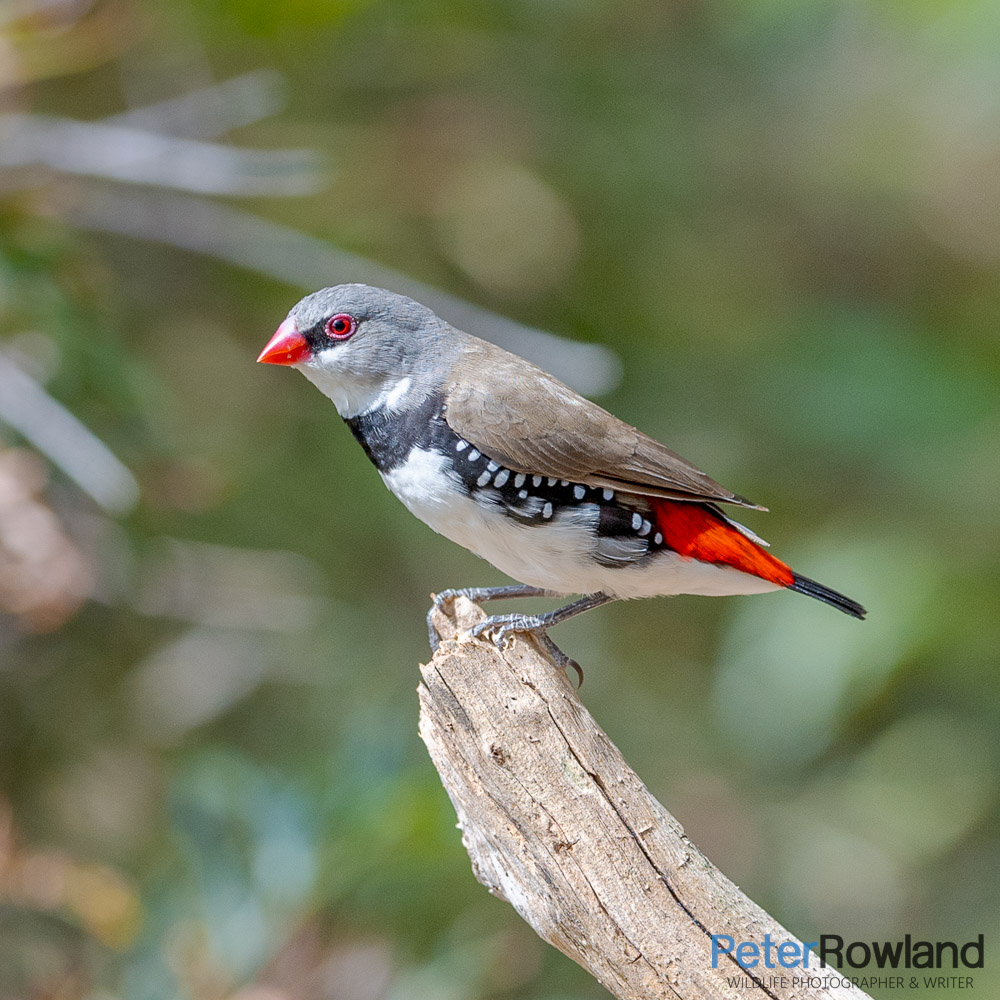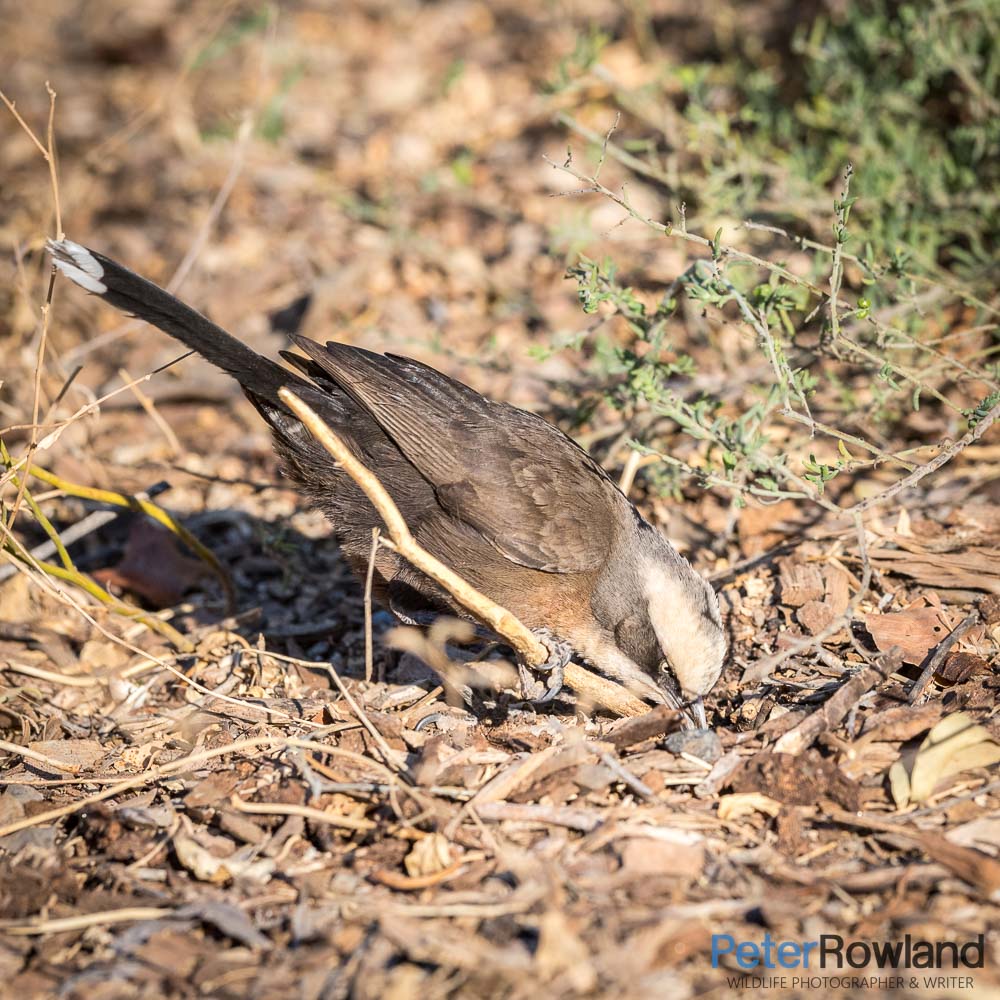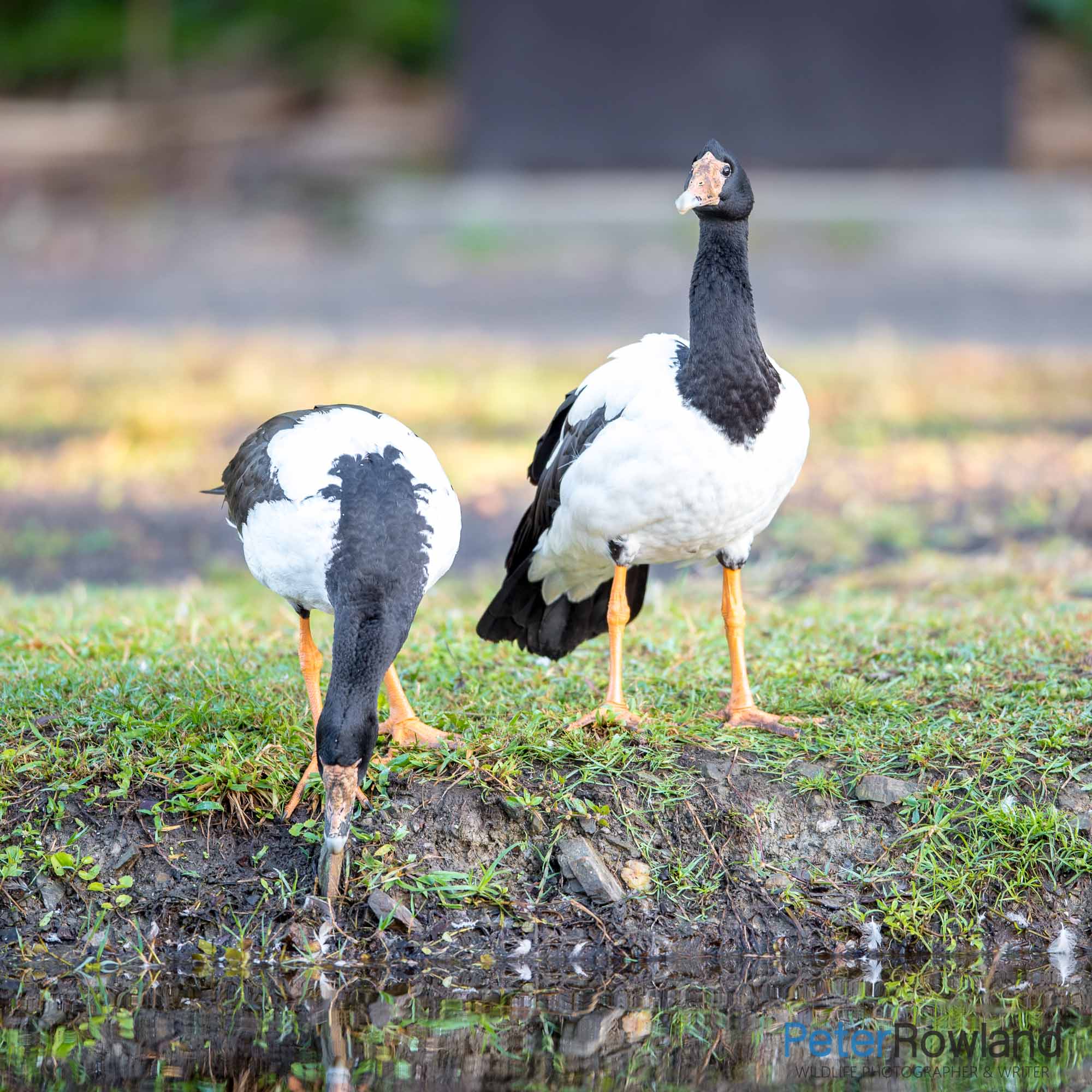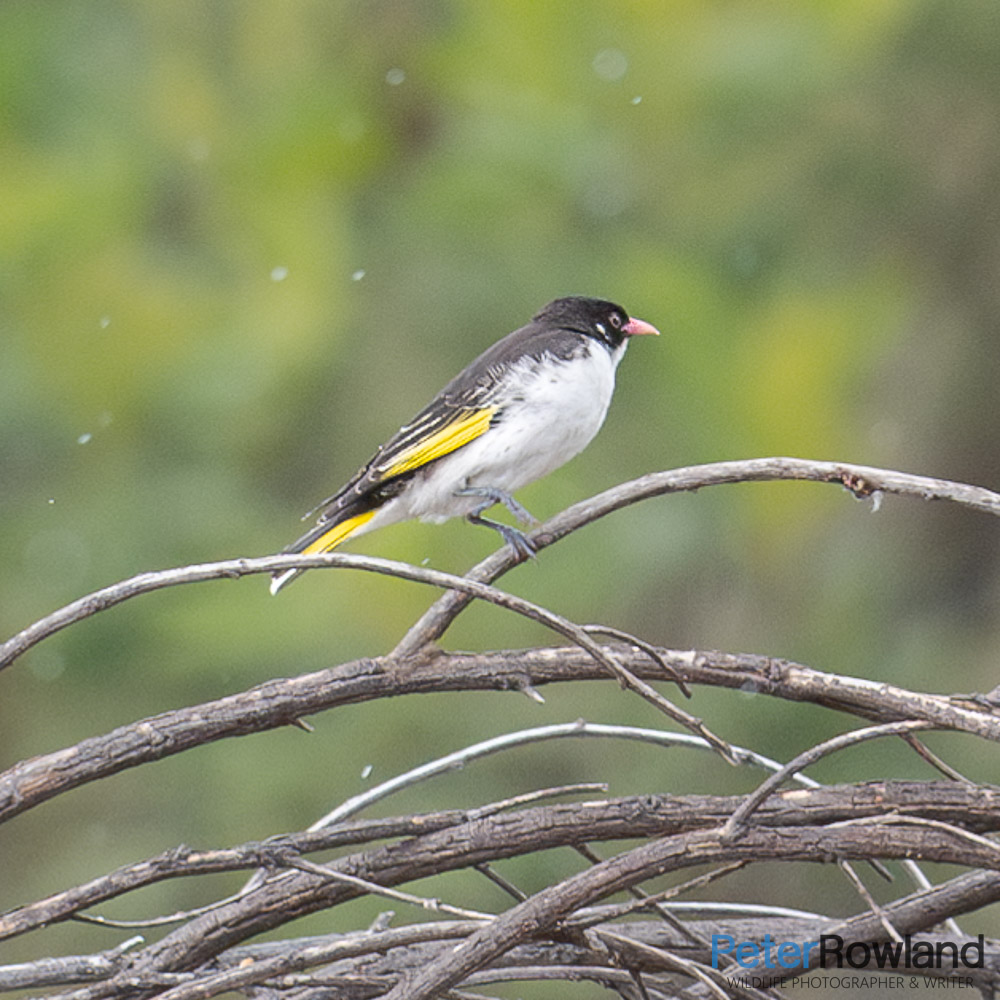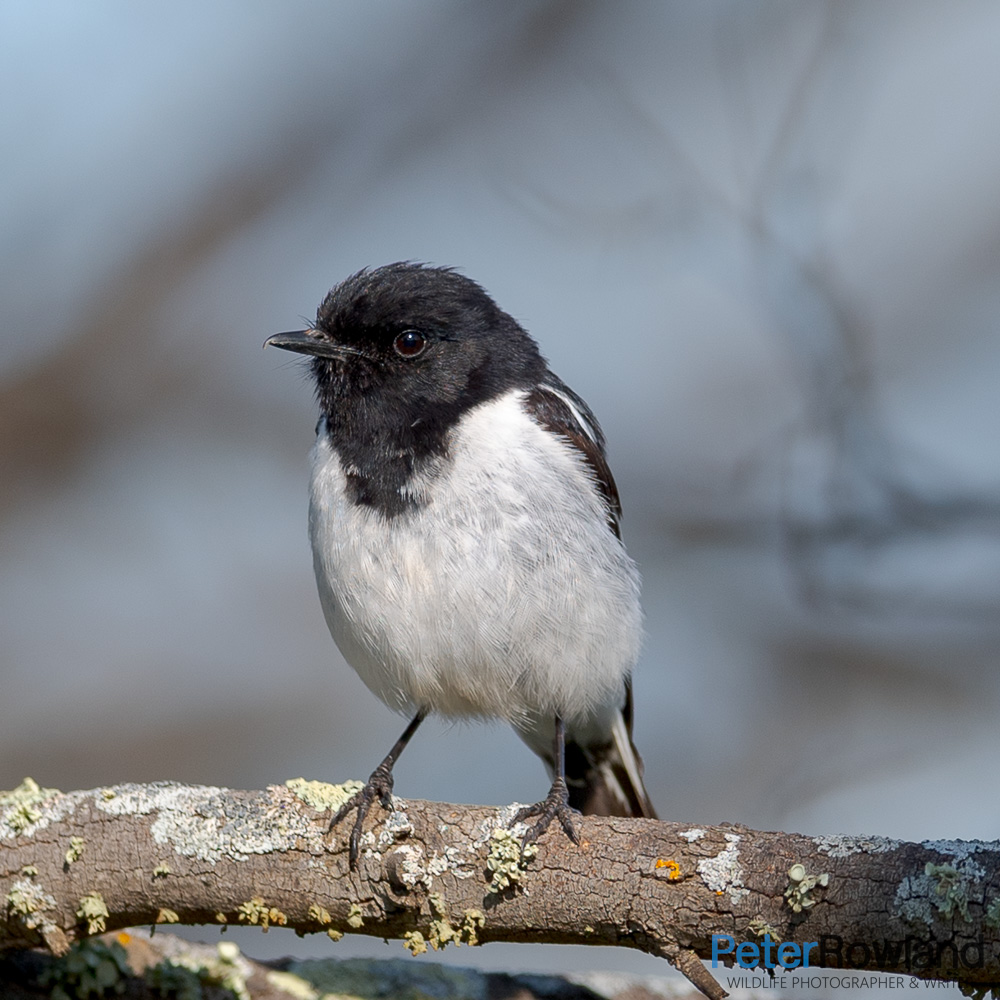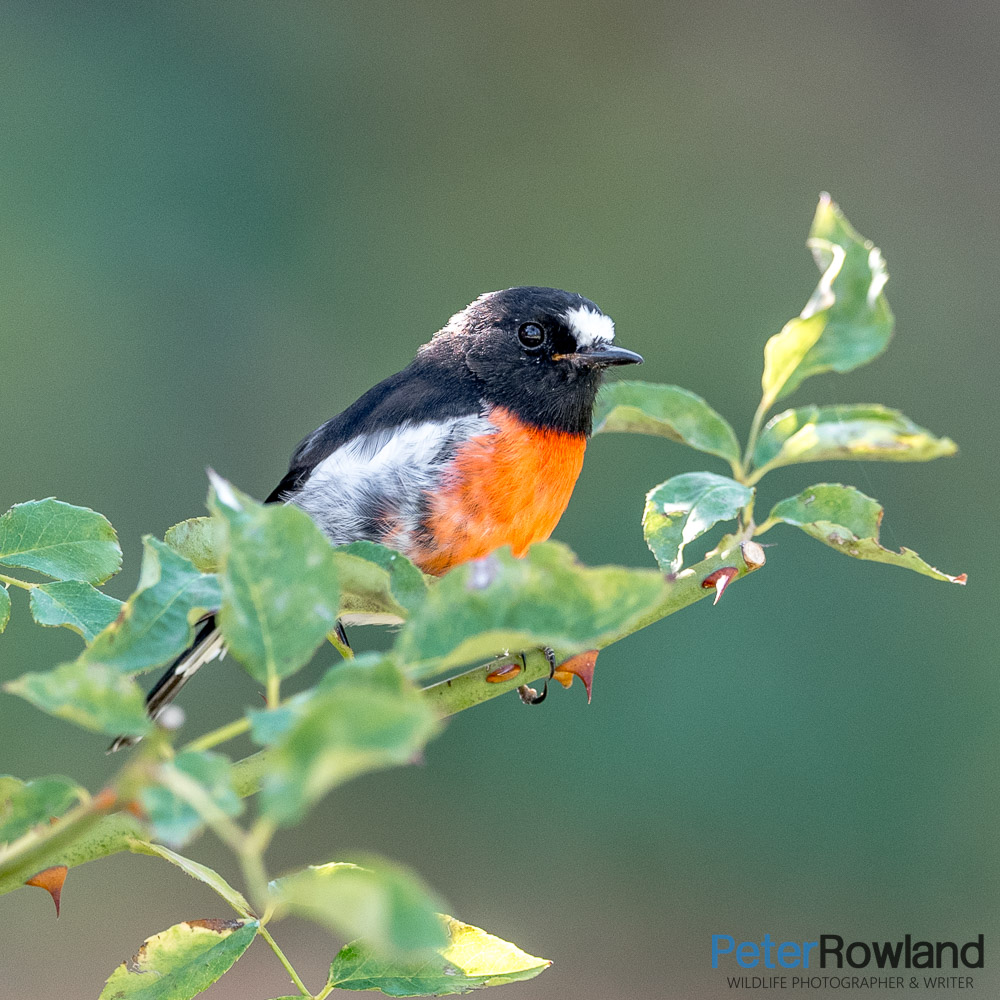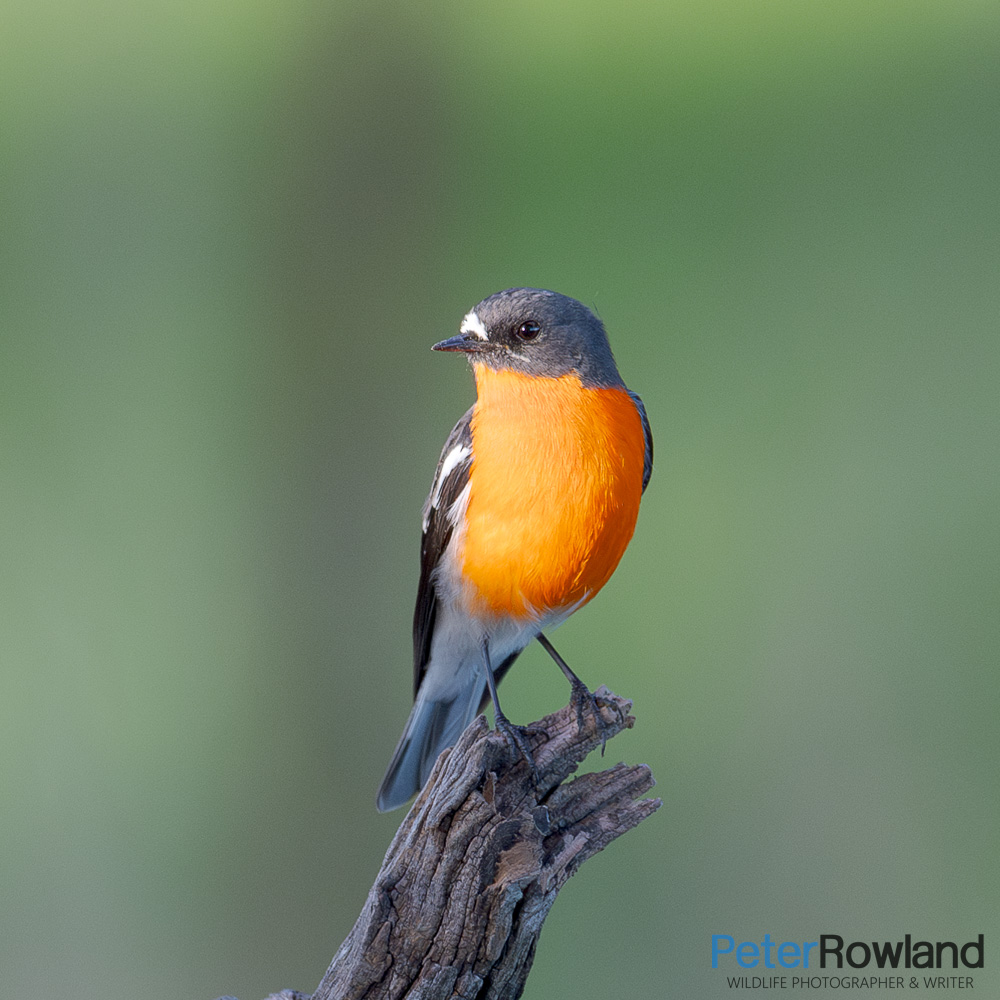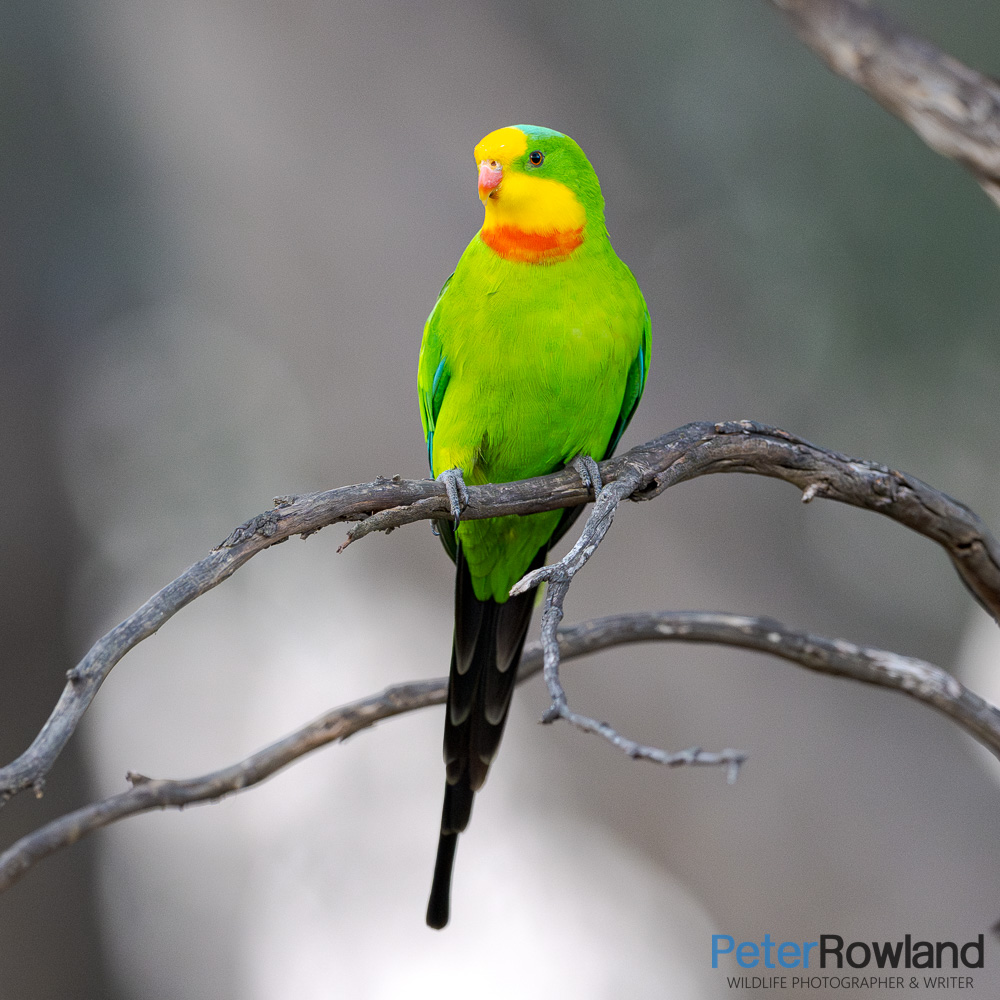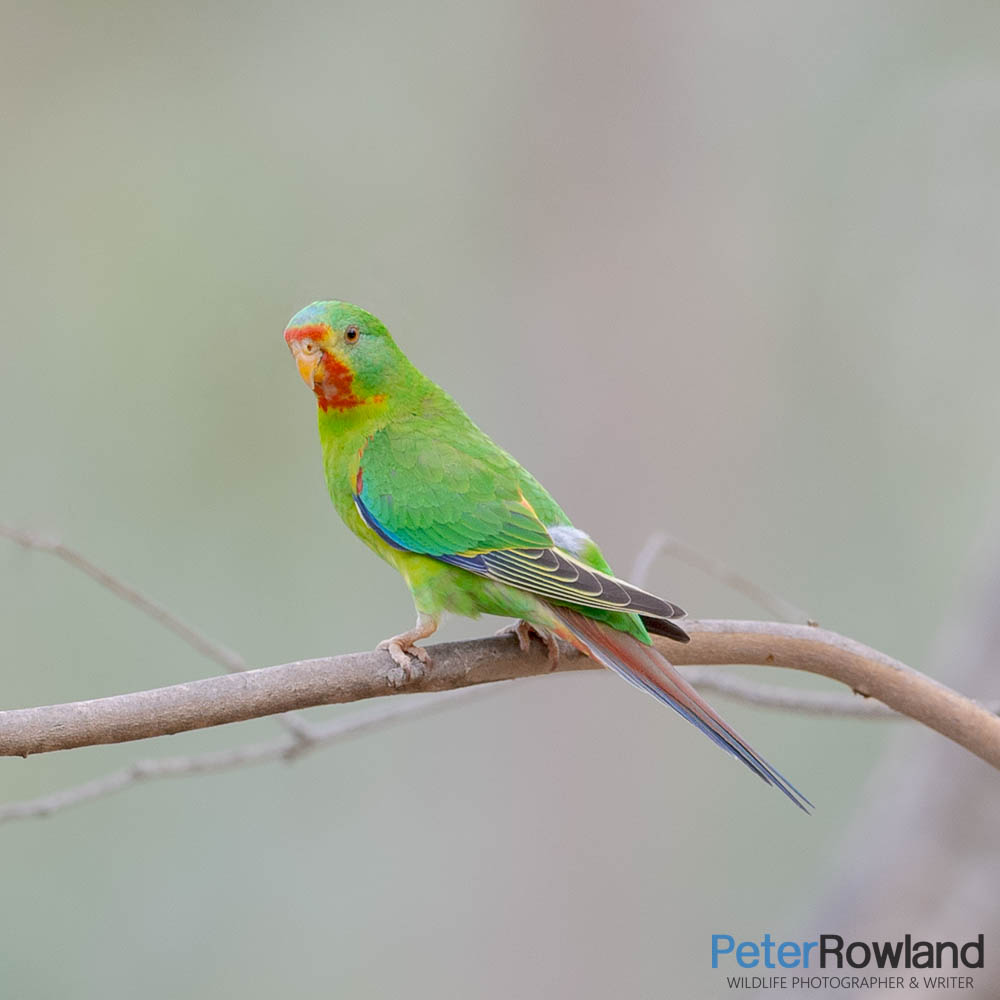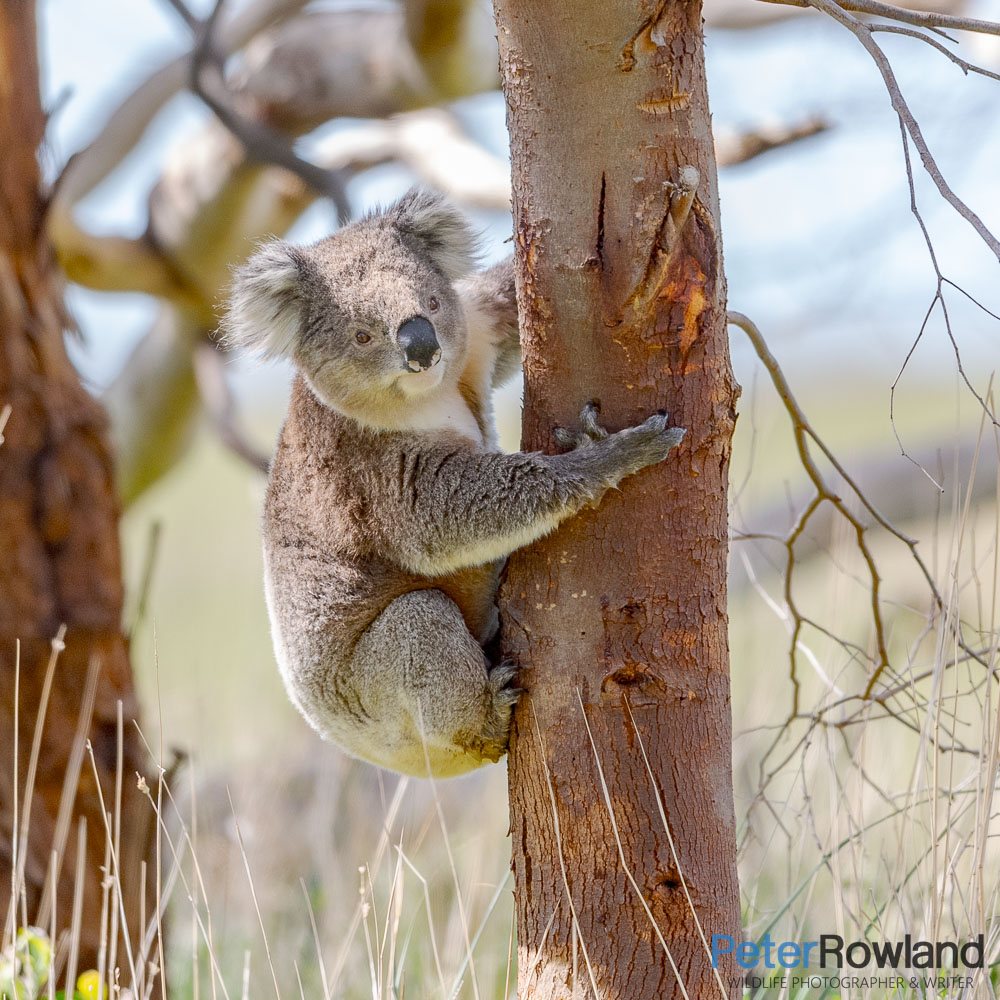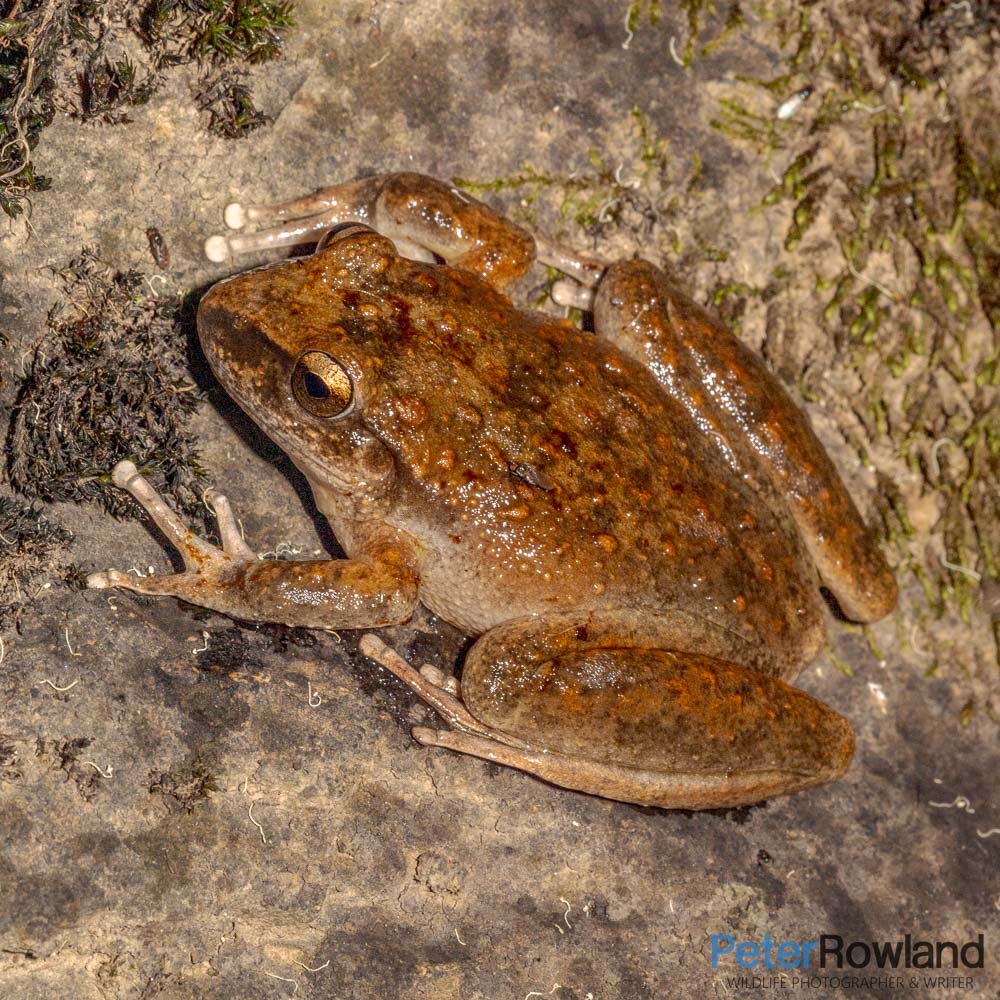Deeper Read - Plants and Animals to Nurture for a Thriving Future
Our iconic and unique wildlife
It’s a special feeling when, out on the farm or in the bush you witness the extraordinary, like a showy Superb Parrot darting through the tree canopy, an inquisitive Squirrel Glider staring at you from a flimsy branch when caught in a spot light at night, a stoic Carpet python sliding confidently – seeking out food, or a flock of shy Double-barred finches calling to each other with their “mew” and “chuk” calls. We have many unique plants and animals in our region, research shows that many do respond to revegetation activities and/or when projects focus on them.
Some of our significant wildlife species
Not all listed threatened species are mentioned here. The following are listed as you might come across them on your patch and this might invite you to become curious about what you can do to support them. Some of the species listed require special habitat that will be different to the more traditional idea of what revegetation looks like; for example, Sloane’s Froglet, Plains Wanderer and Grey Crowned Babblers. A full list of species and classification is available from Environment NSW.
BIRDS
Australasian Bittern
Cryptically-plumaged dark to mid-brown and pale buff, with the markings of the throat and back arranged in a longitudinal pattern. When disturbed it freezes, with its head and bill pointing skywards, the longitudinal pattern mimicking the surrounding reeds of the wetlands within which it lives. In this way it usually avoids detection, although the white of the throat can betray its presence to the careful observer. It is found throughout south-eastern australia, including Tasmania, and also in far south-western WA. Regular seasonal movements have been recorded within populations within the Riverina and southern Victoria. As it moves within the reeds of its wetland home the Australasian Bittern feeds on frogs and small fish, using its long pointed bill to seize its prey from near the surface of the water or amongst the vegetation.
Threats include wetland modifications and disruptions to natural flow regimes, reduced water quality, predation by foxes, feral pigs and cats, impacts of climate change and seasonality of water availability.
Image supplied by Peter Rowland
Image supplied by Peter Rowland
Australasian Bustard
No other Australian bird resembles the Australian Bustard. The back and wings are brown; black and white spotting in the front of the wings is most extensive in the male. The head and neck are grey-buff, except for the black crown, eye-stripe for the black crown, eye-stripe and breast band (browner and less prominent in the female). The remainder of the underparts are white. It is found over most of the Australian mainland. If alarmed, an Australian bustard tends to crouch down on the ground with wings outstretched. When courting, the male’s throat sac inflates until it touches the ground. The Australian Bustard inhabits open wooded grasslands, pastoral lands and shrub steppes.
Threats include altered quality and structure of tussock grasslands (over grazing), predation by foxes and cats, fragmentation and loss of semi-arid open grassy woodlands, secondary poisoning from rabbit baiting.
Brolga
Large grey crane, with a featherless red head and grey crown. The legs are grey and there is a black dewlap under the chin. The Brolga’s call is a loud trumpeting “garooo” or “kaweee-kreee-kurr-kurr-kurr-kurr-kurr-kurr”, which are given in flight, at rest, or during courtship. Another species of crane is also found in Australia. Outside of the breeding season, Brolgas form small groups or flocks of up to a few hundred birds. One of the most spectacular sights is the entertaining and energetic dance performed by the Brolga. Displays may be given at any time of the year and by birds of any age. It is spread across tropical northern Australia, southwards through northeast and east central areas, and central New South Wales to western Victoria. The Brolga inhabits large open wetlands, grassy plains, coastal mudflats and irrigated croplands, and, less frequently, in mangrove-studded creeks and estuaries. It is less common in arid and semi-arid regions, but will occur close to water. Brolga’s are omnivorous (feeding on either vegetable or animal matter), but feeds primarily on tubers and some crops. Some insects, molluscs, amphibians and even mice are also taken.
It is now rare in the region. Major threats include fox predation of young and draining of wetlands.
Image supplied by Peter Rowland
Image supplied by Peter Rowland
Brown Treecreeper
Largest of Australia’s treecreepers, the Brown Treecreeper is mostly pale brown. The head, throat and upper breast are pale greyish-brown, while the lower breast and belly are strongly streaked with black and buff. In flight, a buff stripe can be seen in the wing. Its loud ‘spink’ call, given either singly or in a series, normally betrays its presence before the bird is seen. Both sexes are similar, except females have rufous edges to the feathers of the upper breast. It is endemic to Australia, meaning that it doesn’t occur anywhere else in the world. It is found in the drier open forests and woodlands of eastern Australia, from Cape York Peninsula, Queensland, to south-eastern South Australia. The Brown Treecreeper climbs up the trunks and branches of trees in search of food. It probes into cavities and under loose bark with its long downward curving bill, searching for insects and their larvae. The most favoured insects are ants. Some feeding also takes place on the ground on fallen logs. Brown Treecreepers breed from June to January each year.
Threats include fragmentation and loss of habitat, loss of tree hollows and fallen timber in suitable habitat, loss of ground litter, invasive weeds, aggressive exclusion from Noisy Miners.
Diamond Firetail
Brightly coloured finch; the head is grey, while the remainder of the upperparts are greyish-brown, with the exception of the conspicuous red rump. The underparts are white, with contrasting black on the chest and flanks, the latter being heavily spotted with white. The iris and eyering are red, as is the short conical bill, and there is broad black line between the base of the bill and the front of the eye. Diamond Firetails are found through south-eastern Australia, from the Carnarvon Ranges, Queensland, to Kangaroo Island and the Eyre Peninsula, South Australia. The Diamond Firetail inhabits open grassy woodland, forest and mallee, mainly in the vicinity of watercourses.
Threats include clearing and fragmentation of woodland, open forest, grassland and mallee, invasion of weed species into suitable habitat that out competes food resources, habitat modification particularly loss of native plants, loss of fallen timber and ground litter, exotic grass pasture species invasion, predation of nest from Pied Currawong.
Image supplied by Peter Rowland
Image supplied by Peter Rowland
Dusky Woodswallow
Medium-sized bird (16-19.5 cm, 35 g), with a longish tail. Mostly dark grey-brown, merging to blackish on the tail, with a small black-brown mask. Bluish bill with a black tip. Upper-wings are a dark blue-grey with a white leading edge. Conspicuous white corners on the tail. In flight the dark grey-brown under-body contrasts with the whitish under-wing. Juveniles may be distinguished by white streaking on the body and whitish tips on wing feathers. Immature individuals are similar to adults but retain pale-tipped wing feathers. No seasonal variation in appearance is evident, and sexes are alike. Calls consist of brassy chirps, chirups, a soft low ‘vut vut’ and a brisk ‘peet peet’. Also known to mimic other birds, including the rufous whistler and grey shrike-thrush.
Threats include loss of woodlands and dry open sclerophyll forests, reduction of remnant woodlands and open forests, habitat degradation through loss of dead timber, woody debris and ground layer disturbance or alteration (e.g. invasive weeds such as exotic grass and woody weeds), aggressive exclusion from habitat by Noisy Miners.
Grey-crowned babbler
Medium-sized bird with broad white eyebrow over black eye mask. Most noticeable by large stick nests usually in saplings or large shrubs 3–6 m high, or loud ‘Yahoo’ call. Lives communally in family groups of 4–13 birds. Feeds on insects and larvae under bark of trees and on the ground. It is now endangered in Victoria and appears to be declining in the South West Slopes.
Major threats include lack of tree and shrub regeneration and increased isolation between groups in the fragmented Cypress Pine / Box habitats.
Image supplied by Peter Rowland
Image supplied by Peter Rowland
Magpie Goose
The Magpie Goose has a black neck and head, with a characteristic knobbed crown (larger in males). The underparts are white, with contrasting black edges on the underwing. The bill, legs and feet are orange. The Magpie Goose is widespread throughout coastal northern and eastern Australia. It inhabits floodplains and wet grasslands, and large, noisy flocks of up to a few thousand birds can congregate to feed on aquatic vegetation. The Magpie Goose is a specialized feeder, with wild rice Oryza, Paspalum, Panicum and spike-rush, Eleocharis, forming the bulk of its diet. During the breeding season, normally February to June, the Magpie Goose will build nests in secluded places, usually close to wetlands. The nest is almost single-handedly constructed by the male. It usually consists of a simple unlined cup placed in a floating platform of trampled reeds, but may also be built in treetops. Pairs of geese mate for life, but the male may have two females. As two females may occasionally use the same nest, the large, oval, off-white coloured eggs, may number up to 16, but 8 is a more common clutch size. All adults share incubation and care for the young.
Threats include changes hydrological regimes of wetlands, water pollution, habitat modification (overgrazing and trampling), fox predation on eggs and goslings, competition for food resources by feral pigs.
Painted Honeyeater
A specialist feeder on mistletoe fruit, but also consumes nectar and insects. In NSW, Painted Honeyeaters are generally found on the inland slopes and plains. They are distinguished from other honeyeaters by their pink bills. Breeding pairs generally isolate themselves from their own kind, but loose colonies of breeding birds may also be found. Outside the breeding season it is usually seen in pairs or small flocks. Painted Honeyeaters need healthy mature woodlands, such as Boree and Bulloak.
Threats include clearing of Boree, Brigalow and box iron bark woodlands, removal of trees or branches with mistletoes.
Image supplied by Peter Rowland
Plains-wanderer
Small ground dwelling bird found in sparse native grasslands. The female is slightly larger and more brightly coloured than the male. .Grasslands occupied by the Plains wanderer tend to be those where the topsoil has been eroded to expose a red clay subsoil which does not support dense pasture growth. Such areas comprise about 50 percent of bare ground with litter comprising a further 10 percent. In the Riverina, pairs of Plains-wanderer occupy home ranges of 18 hectares. They forage during the day for a wide variety of seeds (particularly grasses and saltbush) and ground dwelling insects.
Main threats include loss of habitat, overgrazing by domestic stock, particularly during dry periods (drought), and predation by foxes and cats.
South-eastern Glossy Black Cockatoo
Small brown-black cockatoo with a massive, bulbous bill and a short crest. Males have a prominent red tail panel, while that of females is yellow to orange-red. The coloured tail panel is barred black in juvenile birds, with the extent of barring decreasing with age. The female usually has irregular pale-yellow markings on the head and neck and may have yellow flecks on the underparts and underwing. They are usually seen in pairs or small groups feeding quietly in sheoaks.
Threats include loss of habitat, decline in hollow bearing trees, fire regimes that impact sheoak stands and ability for the sheoaks to mature, impact of climate change on sheoak productivity and extent, habitat weed infestation and illiegal bird smuggling/egg collection.
Hooded Robin – Image supplied by Peter Rowland
South-eastern Hooded Robin, Scarlet Robin, Flame Robin, Pink Robin
The Robins are what are described as “perch and pouch” feeders that required habitat with good ground litter, including fallen timber, that provides a rich food resource of insects.
Although each of these robins can be found in specific habitats and ranges all off these species are impacted by habitat fragmentation, habitat degradation and invasion of exotic species including small fruiting plants that favour Pied Currawong occupancy.
Scarlet Robin – Image supplied by Peter Rowland
Flame Robin – Image supplied by Peter Rowland
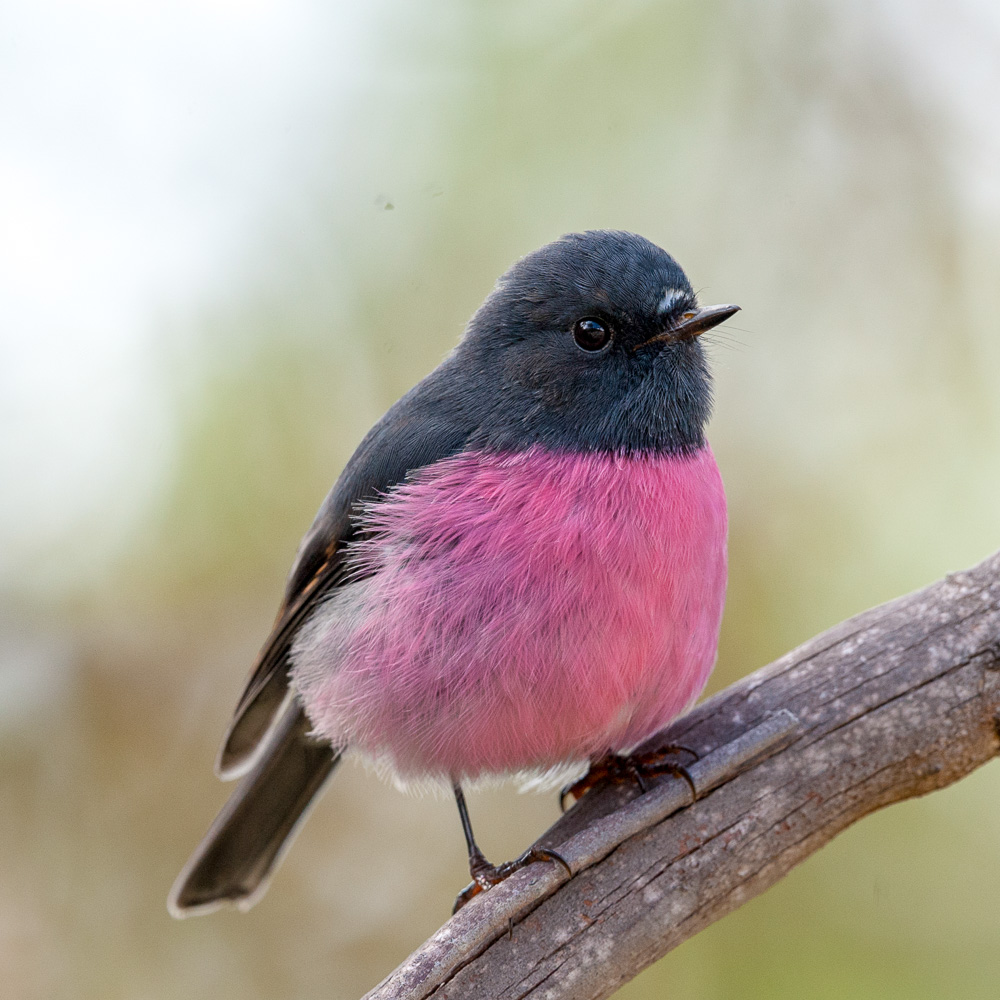
Pink Robin – Image supplied by Angus McNab
Superb Parrot
The Superb Parrot is brilliant green, with a long, tapered tail and orange bill. The male has a bright yellow face and throat, bordered with orange below and with an orange wash on the forehead. The female has a bluish tinge to the facial feathers and has orange-red thighs. The wings of both sexes have a blue wash and the underside of the tail is reddish. It is found in a broad band throughout central eastern Australia, around the Murray River on the Vic and NSW border to northern NSW and southern Qld. Nests in hollows within woodlands and riverine forests, and the flight is fast and direct. Often seen in small flocks, feeding on the ground or in trees on seeds and flowers, supplemented with lerps, and will congregate around agricultural areas and silos to feed on spilled grain. The species shows some migration behaviour, moving northwards during winter.
The main threats to this species include the clearance of the understorey shrub layer from Cypress Pine/Box woodlands and suitable nest sites.
Image supplied by Peter Rowland
Image supplied by Peter Rowland
Swift Parrot
Small bright green parrot (about 25 cm long) with red around the bill, throat and forehead. The red on its throat is edged with yellow. Its crown is blue-purple. There are bright red patches under the wings. One of most distinctive features from a distance is its long (12 cm), thin tail, which is dark red. This distinguishes it from the similar lorikeets, with which it often flies and feeds. Can also be recognised by its flute-like chirruping or metallic “kik-kik-kik” call.
Threats include habitat loss, reduced food availability due to droughts, competition for food resources and aggressive exclusions from habitat by over abundance of Noisy Miners.
Mammals
Koala
The Koala is a stocky, arboreal marsupial, with thick greyish fur (shorter and paler in north, and longer and more brownish in south). Ears round and woolly, and nose smooth, black and vertically oval-shaped. Occurs in eastern Australia, from north-eastern Qld (south of Cape York Peninsula), through central and eastern NSW and Vic (and along Murray River), to far south-eastern SA. Introduced to numerous islands, such as Phillip Island Vic and Kangaroo Island SA. Inhabits eucalypt forests and woodlands in lowland areas and along river systems. Arboreal, feeding exclusively on leaves, mostly those of certain species of eucalypts, but will walk on all fours along the ground when moving between trees. Female normally produces a single young (joey), which is protected within her pouch. The young Koala is not born with the gut bacteria needed to digest eucalypt leaves, and obtains this by eating its mother’s pap (faeces).
Threats include loss, modification and fragmentation of habitat, predation from roaming domestic dogs, intense prescribed burns that affect tree canopies, Koala disease, heat stress during droughts and heat waves, small local populations that are isolated.
Image supplied by Peter Rowland
Spotted-tailed Quoll
The Spotted-tailed Quoll is about the size of a domestic cat, from which it differs most obviously in its shorter legs and pointed face. The average weight of an adult male is about 3500 grams and an adult female about 2000 grams. It has rich-rust to dark-brown fur above, with irregular white spots on the back and tail, and a pale belly. The spotted tail distinguishes it from all other Australian mammals, including other quoll species. However, the spots may be indistinct on juvenile animals. Threats include loss and fragmentation of habitat, competition from feral predators such as cats and foxes.
Squirrel glider
Gliding, arboreal mammal, similar to Sugar and Krefft’s Gliders except it is larger, with a more pointed face and a bushier tail. Nocturnal, and breeds and roosts in hollows of trees, usually with small entrance, about 4 cm in diameter. Feeds mainly on insects (e.g. caterpillars, weevils, beetles and moths), but also utilises plant sap, gum, honeydew and nectar. The presence of large wattles, such as Silver Wattle (Acacia dealbata), Golden Wattle (A. pycnantha) and Hickory Wattle/Lightwood (A. implexa), appears to be important to provide gum for food when insect numbers are low in winter/early spring. The Squirrel Glider is rare in the region. Major threats include lack of shrubs in Cypress Pine/Box woodlands and Riverine forests and loss of large hollow-bearing trees.
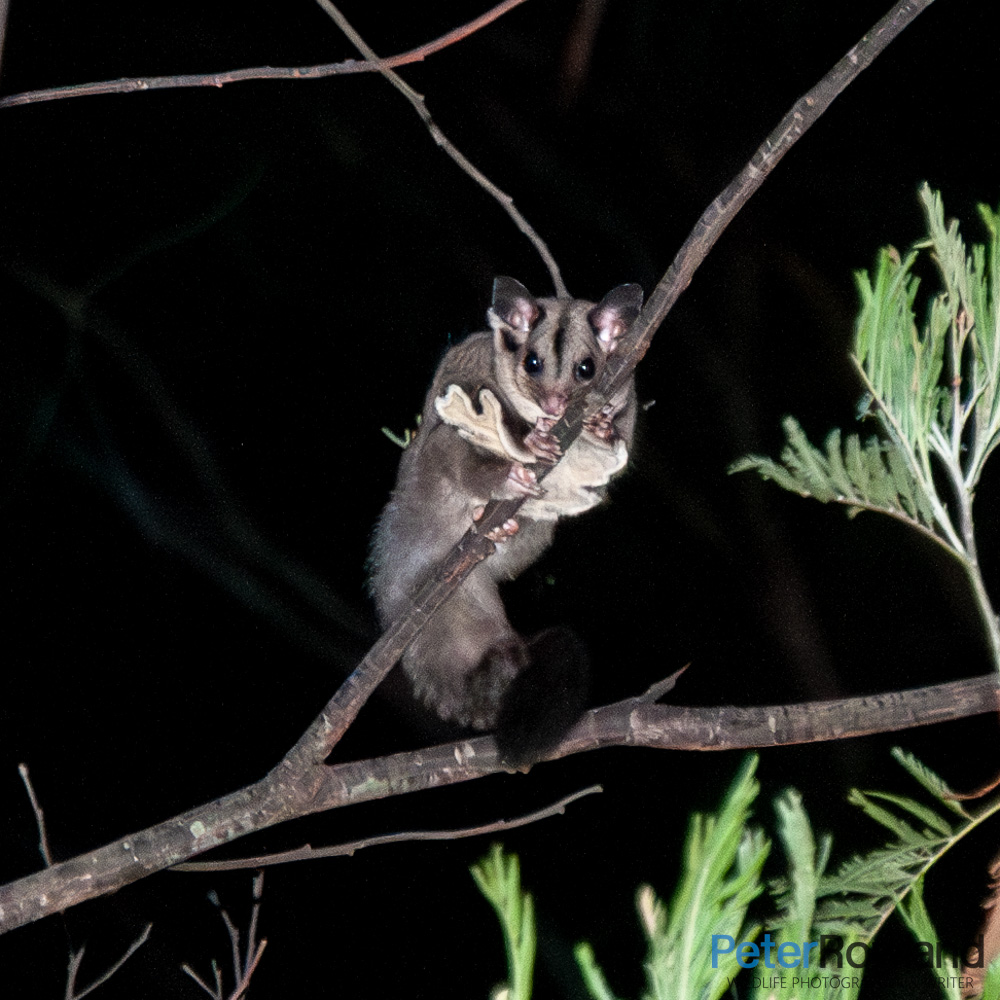
Image supplied by Peter Rowland
Reptiles
Carpet Python
The Carpet Python is a highly variable large python. Generally, blackish, brownish or olive-green above, with greenish-yellow spots, irregular bright yellow stripes, or pale brown to olive-grey, dark-edged blotches, transverse bands and longitudinal lines. Yellowish, cream or white on undersurface. Head large and triangular, and visibly distinct from neck, with row of deep heat-sensory pits along lower jaw. The species occurs throughout mainland Australia, except the arid interior, western WA and southern Vic. The Carpet Python is found in range of habitat types, including rainforests, open forests and woodland, riverine areas, coastal heaths, shrubland, rocky outcrops, and suburban parks and gardens. Generally nocturnal and semi-arboreal, becoming more diurnal during cooler months. Feeds mostly on small to medium-sized mammals and birds, but also on frogs and lizards. Oviparous, laying up to 50 eggs in a clutch, with female defending eggs until they hatch. Non-venomous, but can be aggressive and capable of inflicting a painful bite that is prone to infection.
These snakes are rare in riverine forests and rocky outcrops west of the Hume Highway. Major threats are not known, but may include fox predation, loss of hollow bearing trees (for shelter and nesting) and increased isolation of hilltop populations.
Frogs
Booroolong Frog
Medium sized tree frog, with adults growing to about 5 cm. Their body-colour may be grey, olive or brown with indistinct black markings. The abdomen is white. The skin usually has a slightly warty appearance. The fingers and toes have well developed discs, and the toes are strongly webbed. The call is a soft, purring ‘craww craww craww’.
Threats include habitat modification particularly loss of cobble banks, stream bank degradation (loss of vegetation, trampling by stock, feral pigs and horses and willow invasion). Also susceptible to chytrid fungus.
Image supplied by Peter Rowland
Sloane's Froglet
Small ground-dwelling frog belonging to the family Myobatrichidae. This species superficially resembles other frogs of the genus Crinia, but it can be readily identified by its physical characteristics and call. C. sloanei shows far less variation in back colour pattern than other Crinia species, having a mustard yellow or greyish back with large patches of darker pigment over the body. The throat of males is greyish green. The call is described as a short metallic ‘chick chick chick chick’ repeated frequently.
Threats include fragmentation and degradation of habitat, longer drought periods, changes in water availability, urbanisation.
The following bird list includes species that are known to respond to revegetation activities. List is based on the paper “Not All Kinds of Revegetation Are Create Equal: Revegetation Type Influences Bird Assemblages in Threatened Australian Woodland Ecosystems” (see references)
| Common Name | Scientific Name |
| Australasian Pipit | Anthus novaeseelandiae |
| Brown Songlark | Cincloramphus cruralis |
| Flame Robin | Petroica phoenicea |
| Grey Fantail | Rhipidura fuliginosa |
| Grey Shrike-thrush | Colluricincla harmonica |
| Red-browed Finch | Neochmia temporalis |
| Red-capped Robin | Petroica goodenovii |
| Red Wattlebird | Anthochaera carunculata |
| Rufous Whistler | Pachycephala rufiventris |
| Silvereye | Zosterops lateralis |
| Speckled Warbler | Chthonicola sagittata |
| Superb Fairy-wren | Malurus cyaneus |
| Western Gerygone | Gerygone fusca |
| White-plumed Honeyeater | Lichenostomus pencillatus |
| Willie Wagtail | Rhipidura leucophrys |
| Yellow-rumped Thornbill | Acanthiza chrysorrhoa |
| Yellow Thornbill | Acanthiza nana |
Find out more…
To find information on threatened species visit threatenedspecies.bionet.nsw.gov.au you can search for threatened species by region, habitat, species and also by projects.
For detailed information on how to implement revegetation work for specific species visit:
Sustainable Farms – there are many books and guides to help design for wildlife
Birds of the Sandridge Woodlands in Yorta Yorta Country
Birdlife Australia look for current programs
Special plants needing special attention
After a cracking summer in our area there is nothing like the change of season and what comes with this. When rain falls our native plants spring into action and the critters that depend on these plants (and vice versa) get busy. Late winter and into early spring is the perfect time to look for plants and perhaps seek out the rare and special ones that occur in your area.
A rare or threatened plant doesn’t necessarily mean the plants are weak. Sometimes where they are found they can be in reasonable abundance but only in that small patch. Sometimes their rarity relates to other factors such as loss of pollinators. If you find something unique then whatever you are doing has meant it can be there so the next question is how can you encouraged it to thrive?
Some of our significant plants to look out for include:
For a full list of threatened plants species visit Environment NSW – Threatened Species and the list in the back of the book.
| Botanical Name | Common Name (if given) |
| Diuris callitrophila | Oaklands Donkey Orchid |
| Diurus tricolor | Pink Donkey Orchid / Painted Diurus |
| Caladenia arenaria | Spider Orchid |
–

